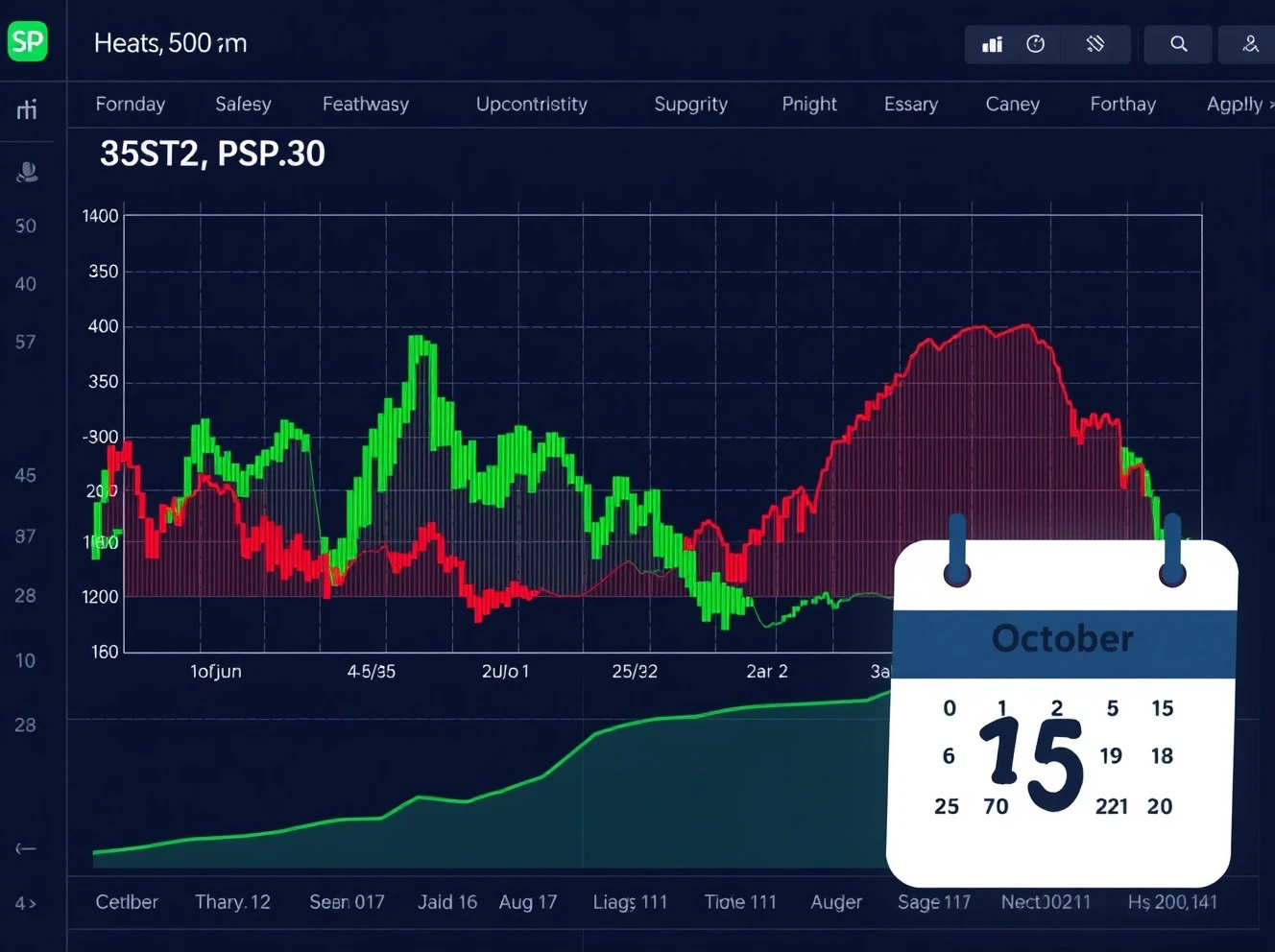October holds a special place in market history, often sparking investor curiosity about the S&P 500 October performance. Many traders wonder if this historically volatile month typically ends positively. Consequently, understanding these seasonal patterns becomes crucial for strategic investment decisions.
Historical S&P 500 October Performance Analysis
The S&P 500 October performance reveals fascinating historical patterns. According to market data spanning several decades, October shows mixed but generally positive results. Furthermore, this month frequently experiences significant volatility. However, it often concludes with gains despite mid-month turbulence.
Market analysts consistently track October’s unique characteristics. Specifically, the S&P 500 finishes higher approximately 60% of the time during October months. This statistic surprises many investors who associate October primarily with market crashes. Therefore, historical context provides valuable perspective.
Key Factors Influencing October Market Trends
Several elements significantly impact the S&P 500 October performance. Third-quarter earnings reports typically emerge during this period. Additionally, Federal Reserve policy decisions often occur in autumn. Moreover, seasonal factors like portfolio rebalancing affect market dynamics.
Important factors include:
- Earnings season intensity – Major companies report Q3 results
- Economic data releases – Key indicators shape market sentiment
- Institutional activity – Large funds adjust positions quarterly
- Historical precedents – Past October patterns influence current behavior
Comparing October to Other Months
The S&P 500 October performance differs notably from other months. For instance, September typically shows weaker returns. Conversely, November often begins strong seasonal rallies. Meanwhile, December usually maintains positive momentum.
October frequently serves as a transition period. Markets typically consolidate after summer months. Then, they establish direction for year-end. Consequently, October becomes crucial for annual performance.
Notable October Market Events
Historical events significantly shaped the S&P 500 October performance perception. The 1929 crash occurred in October. Similarly, the 1987 Black Monday happened this month. However, many strong Octovers also exist in market history.
Recent decades show improved October trends. Modern markets demonstrate resilience during this period. Regulatory changes and circuit breakers reduced extreme volatility. Therefore, contemporary October performance differs from historical patterns.
Investment Strategies for October Trading
Understanding S&P 500 October performance informs better investment approaches. Seasoned investors often anticipate October volatility. They typically maintain diversified portfolios during this period. Moreover, they watch for buying opportunities during market dips.
Effective strategies include:
- Dollar-cost averaging – Regular investments smooth volatility effects
- Sector rotation – Adjusting exposure to seasonal performers
- Risk management – Implementing stop-loss orders during volatile periods
- Long-term perspective – Focusing on annual goals rather than monthly fluctuations
Current Year S&P 500 October Outlook
Current market conditions influence this year’s S&P 500 October performance. Economic indicators provide context for expectations. Interest rate environments affect market sentiment. Global events also impact domestic market performance.
Analysts monitor several key metrics. Inflation data remains crucial for Federal Reserve policy. Corporate earnings guidance signals business confidence. Geopolitical developments can create unexpected volatility.
Frequently Asked Questions
How often does the S&P 500 finish October higher historically?
Historical data indicates the S&P 500 finishes October with gains approximately 60% of the time. This percentage varies across different decades but remains consistently above 50% in modern markets.
What makes October particularly volatile for stocks?
October combines several market-moving factors including third-quarter earnings, economic policy decisions, and seasonal portfolio adjustments. These elements collectively create heightened market activity and price fluctuations.
Are October gains typically significant or modest?
October returns show considerable variation. Some years produce substantial gains while others show minimal movement. The average October return historically falls within moderate ranges compared to other months.
How should investors approach October trading?
Investors should maintain perspective during October volatility. Long-term strategies typically outperform reactionary approaches. Diversification and disciplined investing remain effective during this period.
Does October performance predict year-end results?
October trends sometimes indicate fourth-quarter direction but don’t guarantee year-end outcomes. Market conditions can change rapidly during the final quarter, making predictions challenging.
Which sectors typically perform best in October?
Defensive sectors often show relative strength during October volatility. However, performance varies annually based on specific market conditions and economic factors affecting different industries.








